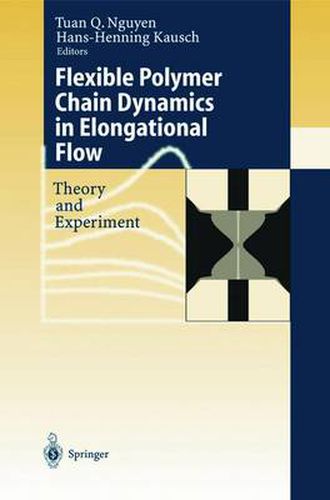Readings Newsletter
Become a Readings Member to make your shopping experience even easier.
Sign in or sign up for free!
You’re not far away from qualifying for FREE standard shipping within Australia
You’ve qualified for FREE standard shipping within Australia
The cart is loading…






This title is printed to order. This book may have been self-published. If so, we cannot guarantee the quality of the content. In the main most books will have gone through the editing process however some may not. We therefore suggest that you be aware of this before ordering this book. If in doubt check either the author or publisher’s details as we are unable to accept any returns unless they are faulty. Please contact us if you have any questions.
The behavior of polymer solutions in simple shear flows has been the subject of considerable research in the past. On the other hand, reports on polymers in elongational flow have appeared comparatively recently in the literature. Elongational flow with an inherent low vorticity is known to be more effective in extending polymer chains than simple shear flow and thus is more interesting from the point of view of basic (molecular chain dynamics at high deformation) and applied polymer science (rheology, fiber extrusion, drag reduction, flow through porous media). Undoubtly, one landmark in the field of polymer dynamics in elongational flow was the notion of critical strain-rate for chain extension, initially put forward by A. Peterlin (1966) and later refined into the coil-stretching transition by P. G. de Gennes and H. Hinch (1974). In the two decades which followed, significant progress in the understanding of chain conformation in strong flow has been accomplished through a combination of advances in instrumentation, computation techniques and theoretical studies. As a result of the multidisciplinary nature of the field, information on polymer chains in strong flow is accessible only from reviews and research papers scattered in disparate scientific journals. An important objective of this book is to remedy that situation by providing the reader with up-to-date knowledge in a single volume. The editors therefore invited leading specialists to provide both fundamental and applied information on the multiple facets of chain deformation in elongational flow.
$9.00 standard shipping within Australia
FREE standard shipping within Australia for orders over $100.00
Express & International shipping calculated at checkout
This title is printed to order. This book may have been self-published. If so, we cannot guarantee the quality of the content. In the main most books will have gone through the editing process however some may not. We therefore suggest that you be aware of this before ordering this book. If in doubt check either the author or publisher’s details as we are unable to accept any returns unless they are faulty. Please contact us if you have any questions.
The behavior of polymer solutions in simple shear flows has been the subject of considerable research in the past. On the other hand, reports on polymers in elongational flow have appeared comparatively recently in the literature. Elongational flow with an inherent low vorticity is known to be more effective in extending polymer chains than simple shear flow and thus is more interesting from the point of view of basic (molecular chain dynamics at high deformation) and applied polymer science (rheology, fiber extrusion, drag reduction, flow through porous media). Undoubtly, one landmark in the field of polymer dynamics in elongational flow was the notion of critical strain-rate for chain extension, initially put forward by A. Peterlin (1966) and later refined into the coil-stretching transition by P. G. de Gennes and H. Hinch (1974). In the two decades which followed, significant progress in the understanding of chain conformation in strong flow has been accomplished through a combination of advances in instrumentation, computation techniques and theoretical studies. As a result of the multidisciplinary nature of the field, information on polymer chains in strong flow is accessible only from reviews and research papers scattered in disparate scientific journals. An important objective of this book is to remedy that situation by providing the reader with up-to-date knowledge in a single volume. The editors therefore invited leading specialists to provide both fundamental and applied information on the multiple facets of chain deformation in elongational flow.